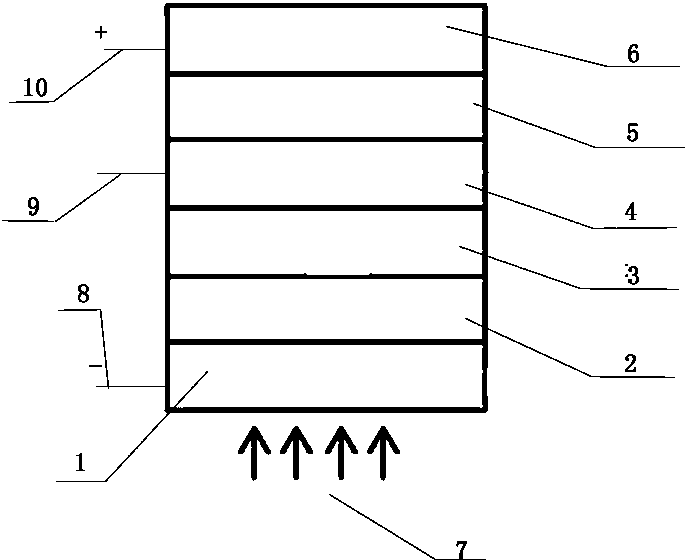Organic small-molecule photovoltaic device based on three-terminal electrode structure
A photovoltaic device and terminal electrode technology, applied in the field of organic small molecule photovoltaic devices, to achieve the effect of improving energy conversion efficiency and improving exciton dissociation efficiency
- Summary
- Abstract
- Description
- Claims
- Application Information
AI Technical Summary
Problems solved by technology
Method used
Image
Examples
Embodiment Construction
[0010] Such as figure 1 As shown, organic small molecule donor CuPc (thickness 20nm), organic small molecule acceptor CuPc, organic small molecule acceptor (thickness 40nm), the second electrode layer aluminum (thickness 100nm), and then spin-coat the dielectric layer PMMA (thickness 400nm) through the solution, and finally evaporate the third electrode layer aluminum (thickness 100nm) through the vacuum thermal evaporation mask, the ITO layer The conductive surface is connected to the first electrode, the second electrode layer is connected to the second electrode, and the third electrode layer is connected to the third electrode. In the specific implementation process, the electric energy generated by the first electrode and the second electrode can be supplied to the first electrode and the third electrode, so that in the solar power generation process, the electric energy generated by the solar energy is directly supplied to the first electrode and the third electrode, an...
PUM
 Login to View More
Login to View More Abstract
Description
Claims
Application Information
 Login to View More
Login to View More - R&D
- Intellectual Property
- Life Sciences
- Materials
- Tech Scout
- Unparalleled Data Quality
- Higher Quality Content
- 60% Fewer Hallucinations
Browse by: Latest US Patents, China's latest patents, Technical Efficacy Thesaurus, Application Domain, Technology Topic, Popular Technical Reports.
© 2025 PatSnap. All rights reserved.Legal|Privacy policy|Modern Slavery Act Transparency Statement|Sitemap|About US| Contact US: help@patsnap.com

